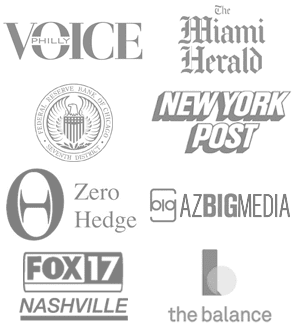Several niche lenders recently announced the Home Equity Line of Credit is now available as a fixed rate HELOC loan with competitive interest rates. The HELOC fixed interest rate option locks in the rates for a specific term. While most traditional home equity line of credit have variable rates, there are a few trusted lenders advertising fixed-rate HELOC options, locking in a portion or all of the balance for predictable payments. In 2025, with variable HELOC rates averaging 8.27% and fixed-rate options slightly higher, they remain a cost-effective alternative to personal loans (12.65%) or credit cards (20.12%). We published this article to outline the pros and cons of locking in HELOCs with fixed interest rates in this current economic market. we will show you how HELOC fixed interest rates actually work.
Key Points on Fixed Rate HELOC Opportunities
- HELOC with Fixed Rates: A Home Equity Line of Credit with a fixed-rate option provides flexible borrowing with predictable payments, ideal for managing large or ongoing expenses.
- Benefits: Fixed HELOCs offer stability, lower rates than unsecured loans, and tax-deductible interest for home improvements, among other benefits.
- Case Studies: Homeowners use fixed-rate HELOC loans for renovations, consolidating debt, investing and saving on interest and simplifying finances.
- Risks: Variable HELOC rates may rise, but in 2025, they are more likely to fall, so why would you want to lock in a fixed rate HELOC if interest rates are forecasted to fall.
Are HELOC Interest Rates Fixed?
Traditional HELOC interest rates are typically variable, tied to the prime rate (7.50% in June 2025), fluctuating monthly or quarterly.
However, home equity lenders like Bank of America offer fixed-rate options, allowing you to lock in part or all of your balance at a stable rate (7.25–10.75% APR).
Fixed-rate HELOCs ensure predictable payments but may have slightly higher rates or fees.
The RefiGuide can help you compare lenders for the best HELOC fixed rate terms.
Top 12 Reasons to Get a Fixed Rate HELOC Today
- Predictable Payments: Fixed-rate HELOCs, offered by lenders like Bank of America, ensure stable monthly payments, simplifying budgeting compared to variable rates that fluctuate with the prime rate (7.50% in June 2025).
- Protection from Rate Hikes: Locking in a fixed rate shields you from rising interest rates, a concern in 2025’s uncertain economic climate, as the Federal Reserve may pause rate cuts.
- Lower Rates than Unsecured Loans: Fixed-rate HELOCs (7.5–9% APR) are cheaper than personal loans (12.65%) or credit cards (20.12%), saving thousands on large expenses.
- Flexible Borrowing: You can draw funds as needed up to your credit limit, paying interest only on the amount used, ideal for ongoing projects like renovations.
- Quick Funding: Fixed-rate HELOCs from lenders like West Capital can fund in 5–10 days, faster than home equity loans with no in-person appraisal required.
- Tax-Deductible Interest: Interest on fixed-rate HELOCs used for home improvements is tax-deductible until 2025, per IRS rules, unlike other loan types. Always consult a tax advisor.
- Home Improvement Funding: Fixed-rate HELOCs fund renovations (e.g., kitchen upgrades) that boost property value, potentially increasing equity by 10–20%, per Remodeling Magazine.
- Debt Consolidation Savings: Pay off high-interest credit card debt (20–25%) with a fixed-rate HELOC, reducing monthly payments and total interest costs significantly.
- No Closing Cost HELOCs with Some Lenders: Mortgage companies like Navy Federal and U.S. Bank offer no-closing-cost HELOCs, minimizing upfront expenses (typically 2–5% of the credit line).
- Versatile Use: Use funds for education, medical expenses, or emergencies, with fixed rates ensuring cost certainty, unlike variable-rate HELOCs or personal loans.
- High Borrowing Limits: Lenders like PNC offer HELOCs up to $1 million, based on 80–85% of your home’s value, ideal for large-scale investments.
- Multiple Fixed-Rate Locks: Some lenders, like BECU, allow up to three fixed-rate balances, letting you lock portions of your HELOC at different times for flexibility.
Case Study 1: Home Renovation with Fixed-Rate HELOC
Background: Sarah, a 40-year-old homeowner in Scottsdale, Arizona, owned a $500,000 home with a $250,000 mortgage, leaving $250,000 in equity. She wanted to remodel her kitchen and bathroom, estimated at $60,000, to increase her home’s value.
Action: Sarah applied for a $100,000 HELOC with U.S. Bank, locking $60,000 at a fixed 7.44% APR (0.25% discount for checking account). The no-closing-cost option saved her $2,000 upfront. She drew $40,000 initially for the kitchen, paying $248 monthly interest, and later $20,000 for the bathroom, with a 10-year draw period.
Outcome: The renovations boosted her home’s value to $575,000, adding $75,000 in equity. Fixed payments ensured budgeting ease, and the interest was tax-deductible, saving her $1,200 annually. Sarah plans to sell in five years, leveraging the increased value for profit.
Case Study 2: Fixed-Rate HELOC for Debt Consolidation
Background: John, a 45-year-old teacher in Dallas, Texas, had a $350,000 home with $100,000 equity and $25,000 in credit card debt at 20% interest ($500 monthly). His 720 credit score qualified him for competitive rates.
Action: John secured a $50,000 HELOC from Navy Federal Credit Union at a fixed 7.75% APR, with no closing costs due to his military affiliation. He drew $25,000 to pay off his credit cards, with a monthly payment of $162 (interest-only), and kept the remaining credit for emergencies.
Outcome: John reduced his monthly debt payment by $338 ($4,056 annually), freeing up funds for savings. The fixed rate ensured stability, and he avoided new credit card debt by adjusting spending habits. The HELOC’s flexibility allowed future draws if needed.
Understanding Fixed-Rate HELOCs
Unlike standard HELOCs with variable rates that can rise (e.g., 7.5–15.125% APR), fixed-rate HELOCs allow you to lock in a rate for part or all of your balance, typically during the 10-year draw period. Payments for fixed-rate portions include principal and interest, while variable portions may be interest-only. Lenders like Bank of America allow up to three fixed-rate locks, offering flexibility. Closing costs range from 0–5% ($0–$1,500), and some charge fees for rate locks (e.g., $100). Borrowers need 15–20% equity, a 620+ credit score, and a DTI below 43%.
Can You Refinance a HELOC to a Fixed Rate?
Yes, you can refinance a Home Equity Line of Credit to a fixed-rate loan, either through a fixed-rate HELOC option or by converting to a fixed-rate home equity loan. In 2025, with variable HELOC rates averaging 8.27% APR, refinancing to a fixed rate (around 7.5–9% APR) ensures predictable payments, shielding you from rate hikes. Lenders like Bank of America offer fixed-rate lock options within a HELOC, allowing you to lock portions of your balance (e.g., $5,000 minimum) at rates like 7.25%–10.75% APR.
Alternatively, refinancing into a home equity loan with LoanDepot at 7.96% APR provides a lump sum with stable payments over 15–30 years. To refinance a HELOC you need 15–20% equity, a 620+ credit score, and a debt-to-income ratio below 43%.
The process involves applying, providing income proof, and an appraisal, with closing costs of 0–5% ($0–$1,500 for a $30,000 loan). Benefits include payment certainty and potential tax-deductible interest for home improvements. If you need a quick HELOC, compare lenders like West Capital Lending or U.S. Bank that waive the in-person appraisal requirement. Always consult a financial advisor to ensure cost-effectiveness.
Who Offers Fixed-Rate HELOCs?

The fixed rate HELOC payment is ideal for budgeting, especially for home remodeling or consolidating high interest credit card debt.
In 2025, with variable HELOC rates averaging 8.27%, fixed-rate options offer stability.
We listed competitive lending companies offering fixed-rate HELOCs, ranked by rates, accessibility, and customer satisfaction, with estimated APRs based on a $30,000 line, 700+ credit score, and 80% loan-to-value (LTV) ratio.
Top 11 Lenders Offering Fixed-Rate HELOCs in 2025
The RefiGuide ranked the top banks and lenders for fixed-rate HELOCs, based on APRs, fees, and availability as of June 2025.
-
Bank of America: 7.25%–10.75% APR (0.25% autopay discount). No closing costs, $5,000 minimum fixed-rate lock, up to three locks. Nationwide.
-
Navy Federal Credit Union: 7.75%–18% APR (fixed-rate option). No closing costs, military-focused, $5,000 minimum lock. 50 states (excl. TX).
-
West Capital Lending: 7.44%–11.60% APR (0.25% checking discount). $0–1% closing costs ($0–$300), $5,000 lock, fixed rate HELOC locks. 49 states.
-
BECU: 7.74%–10.59% APR (5.99%–7.99% intro for 6 months). No closing costs if open 3+ years, $5,000 lock, three locks max. Nationwide.
-
Citizens Bank: 7.88%–10.88% APR (0.5% autopay discount, 5.99% intro for 6 months). No closing costs if open 3+ years, $5,000 minimum lock. 19 states.
-
PNC Bank: 8.15%–18% APR (0.25% autopay discount). $0–1% closing costs, $5,000 lock, $100 lock/unlock fee. 44 states.
-
Truist: 7.50%–14.85% APR (5.99% intro for 9 months). $0–1% closing costs, $15 fixed-rate HELOC fee per draw. Nationwide.
-
Langley FCU: 7.90%–18% APR (fixed-rate option). No closing costs, 100% LTV, appraisal fees apply. Select states.
-
LoaDepot: 7.50%–18% APR (fixed-rate option). $300 application fee, $0–$3,500 third-party fees. 50 states
-
Huntington Bank: 7.90%–18% APR (fixed-rate option). No application fee, $75 lock fee in some states.
-
FourLeaf FCU: 6.49%–12.75% APR (6.49% intro for 12 months). No closing costs if open 3+ years, below-prime rates. Select states.
Risks and Considerations
While fixed-rate HELOCs offer stability, risks remain. Your home is collateral, so missed payments could lead to foreclosure. If home values drop, you might owe more than your home’s worth, especially with high LTV ratios (80–85%). Fixed-rate portions may have higher initial rates than variable ones, and some lenders charge fees for rate locks (e.g., BECU’s $100 fee post-origination). Compare fixed rate HELOC lenders for APRs, fees, and terms, and ensure your DTI (below 43%) and credit score (620+, ideally 740+) qualify for the best rates. Use calculators from NerdWallet to estimate borrowing limits and payments. Consult a financial advisor to align the HELOC with your financial goals.
How to Get a Fixed-Rate HELOC
- Calculate Equity: Subtract your mortgage balance from your home’s appraised value (e.g., $400,000 home – $200,000 mortgage = $200,000 equity).
- Check Credit and DTI: A 740+ credit score and DTI below 36% secure the lowest rates. Improve credit by paying down debts.
- Compare Lenders: Request quotes from at least three lenders, like PNC, West Cap or Citizens, noting fixed-rate options and fees.
- Apply: Submit income proof, mortgage statements, and property details. Expect an appraisal unless waived.
- Lock Rate: Choose a fixed-rate option at closing or during the draw period (e.g., Bank of America’s $5,000 minimum lock). Fund in 5–40 days.
Takeaway on Fixed Interest Rate HELOCs in 2025
A HELOC with fixed interest rates in 2025 combines the flexibility of a revolving credit line with the predictability of stable payments, making it ideal for home improvements, debt consolidation, or major expenses. Benefits like lower rates than unsecured loans, potential tax deductions, and high borrowing limits enhance its appeal, as shown in Sarah and John’s case studies. However, the risk of foreclosure and potential rate lock fees require careful planning. By comparing lenders, verifying eligibility, and aligning the loan with your financial strategy, a fixed-rate HELOC can be a powerful tool to achieve your goals while safeguarding your home.
Frequently Asked Questions on Fixed HELOC Rates and Terms
Can you get a fixed-rate HELOC at any time?
You can get a fixed-rate HELOC during the application process or draw period, depending on the lender. Banks like Citizens Bank allow fixed-rate locks at closing or later (e.g., 5.99% intro rate, then 7.88% APR). Some, like BECU, permit multiple locks during the 10-year draw period for $5,000+ balances. Availability depends on lender policies and your credit profile.
Is HELOC repayment period a fixed term?
Yes, the HELOC repayment period is a fixed term, typically 10–20 years, following the draw period (usually 10 years). During repayment, you pay principal and interest, unlike the interest-only draw period. For example, a $50,000 balance at 8% APR over 15 years costs ~$478 monthly. Lenders like PNC Bank specify terms in the loan agreement. Check with your home equity lender for exact duration.
Do traditional HELOCs have fixed interest rates?
No, traditional home equity lines of credit typically have variable rates linked to the prime rate, averaging 8.27% APR in 2025. Some lenders, like U.S. Bank, offer fixed-rate lock options for portions of the balance (e.g., $5,000 minimum at 7.44% APR), providing stability. Variable HELOC rates can increase with market changes, so review loan terms carefully to understand rate adjustment frequency and caps.
Can you refinance a HELOC to a fixed-rate home equity loan?
Yes, you can refinance a HELOC into a fixed-rate home equity loan to secure stable payments. Lenders like West Capital Lending offer fixed rates (7.96% APR for 15 years) with low closing costs. You’ll need 20% equity, a 640+ credit score, and DTI below 43%. Refinancing replaces the HELOC’s variable rate (e.g., 8.27% APR) with a fixed term, simplifying budgeting but requiring a new application.
Can you raise the limit on a fixed-rate HELOC?
Yes, you can request to raise the limit on a fixed-rate HELOC if your home’s value increases or you pay down your mortgage, boosting equity. Many homeowners realize after their home equity line closes that they didn’t borrow enough. So, it is very common for homeowner to want to increase their limit home equity line of credit. It is possible to increase the HELOC limit but not always. Some lenders require a new appraisal, 620+ credit score, and DTI below 43%. Additional closing costs (0–1%) may apply. For example, increasing a $50,000 HELOC to $75,000 requires sufficient equity and lender approval.

